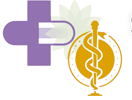
Anaesthesia and Critical Care
1. Anaesthesia Services
Swastham Medicare has a sterile environment, advanced lighting systems, and temperature control. It also has recovery beds with monitoring systems for post-operative care.
Swastham Medicare has Anaesthesia machines with ventilators.
Monitoring systems (ECG, SpO2, EtCO2, temperature, non-invasive and invasive BP).
Defibrillators and emergency carts.
Ultrasound for regional anaesthesia techniques.
Difficult airway equipment (e.g., video laryngoscopes, fibre-optic bronchoscopes).
For fast information, contact us on WhatsApp.
Services Offered-
General anaesthesia (GA), regional anaesthesia (RA), and sedation techniques.
Pre-operative assessments and consultations.
Pain management services (acute and chronic pain).
Emergency and obstetric anaesthesia.
Swastham Medicare has Consultant Anaesthesiologists, Anaesthesia Technicians and Well-trained nursing staff in perioperative care.
2. Critical Care Services
Swastham Medicare has Intensive Care Unit (ICU) for step-down care.
Separate sections for infectious patients, well-equipped nursing stations, and access to emergency exits.
Ventilators (invasive and non-invasive).
Multiparameter monitors for vital signs, ABG analyzers.
Infusion pumps and syringe pumps.
Dialysis machines for CRRT.
Portable X-ray, ultrasound, and echocardiography machines.
Management of critically ill patients (medical and surgical conditions).
Mechanical ventilation and advanced respiratory care.
Hemodynamic monitoring and inotropic support.
Sepsis management and infection control.
Emergency resuscitation services (including ACLS and BLS protocols).
Swastham Medicare Intensivists or Critical Care Specialists.
Critical care-trained nurses (nurse-patient ratio of 1:2 or 1:1 for ventilated patients).
Respiratory therapists.
Support staff for physiotherapy and dietary needs.
3. Integration of Anaesthesia and Critical Care
Emergency Services:
24/7 coverage for surgeries and trauma cases.
Multidisciplinary Approach:
Collaboration with surgeons, physicians, and other specialists.
4. Training Programs:
Regular CME (Continuing Medical Education) and BLS/ACLS training for staff.
Quality and Safety:
Adherence to standard protocols, including WHO surgical safety checklists.
Infection control measures (hand hygiene, sterile techniques).
Upskilling staff through workshops and telemedicine support.
Partnering with nearby tertiary care hospitals for advanced cases.
5. Future Scope
Addition of high-dependency units (HDUs).
Advanced pain clinics and palliative care services.
Research and academic programs in critical care.
This setup ensures comprehensive, safe, and effective anaesthesia and critical care services in a 50-bedded hospital, improving patient outcomes and satisfaction.
For more information or to schedule a consultation, visit Swastha Medicare today.


